








 Dr Rejaul Karim Barbhuiya Assistant Professor, Central Institute of Educational Technology (CIET), NCERT, Ministry of Education, Government of India
Dr Rejaul Karim Barbhuiya Assistant Professor, Central Institute of Educational Technology (CIET), NCERT, Ministry of Education, Government of India

Times have changed. Today is not the time of memorising and copying. Students must be enabled to think for themselves and articulate their thoughts well. They should be able to participate meaningfully and confidently in day-to-day activities – whether it be buying groceries, registering a formal complaint, or voicing opinions freely. A problem-solving attitude, critical outlook, scientific temperament and creativity are non-negotiable skills in the 21st century.
The National Education Policy 2020 talks about technology playing an important role in improving the learning outcomes and learning experiences of children. With the growing penetration of the internet and the easy availability of smartphones and other electronic devices, both parents and teachers can participate in and supervise children's learning through various online apps, quizzes, videos, e-books, educational games and so on. In a nutshell, digital learning has the potential to impact on what children learn and how they learn.
Aakash Chowkase
In the post-Covid world, more than ever before, the parents' role is being seen as pivotal to children's growth and learning. The National Education Policy 2020 released by the Government of India, recognises parents as equal partners in their children's education. At home, it is important for caregivers to create a safe, engaging and positive environment for children to learn, apply themselves and have fun. Parents can also engage actively with children around their homework, curricular and co-curricular activities and projects.
NEP 2020 acknowledges the multilingual reality of India and asserts that the bridge of home language or other familiar language is absolutely crucial for children in the foundational years, not only to help them to comprehend basic subjects, but also to acquire additional languages like English. Thus, the needs-based and systematic use of learners' home languages should be encouraged in the classrooms, along with an anxiety-free, purpose-oriented and input-rich environment.
Aparna Dixit Head of Content and Research, Centre for Learning Resources
 Ms Sonia Kumari Assistant Professor, Kamala Nehru College, University of Delhi
Dr
Post-doctoral Research Fellow, University of California, Berkeley, USA, Department of Psychology
Ms Sonia Kumari Assistant Professor, Kamala Nehru College, University of Delhi
Dr
Post-doctoral Research Fellow, University of California, Berkeley, USA, Department of Psychology
Thanks to globalization and the emergence of technologies, international boundaries have become blurred. English, to a high degree, is a commonly understood medium of communication. It is one of the key tools that students need to perform well today and in the future. According to a global study, while recruiting, 98.5% of employers implicitly or explicitly assess a candidate’s English communication skills! There is therefore a growing demand for English communication skills, because it empowers people and enables them to lead a better life.
Functional communication skills, involving aspects of LSRW (listening, speaking, reading and writing), are central to knowledge acquisition, children’s intellectual, social and emotional growth, and life-long learning. Specifically, strong listening and speaking skills are not only vital in the overall language learning process, but also lead to better reading and writing skills. Yet, these foundational skills tend to be neglected in schools due to the high pupil-teacher ratio, lack of oral language-focused assessment, and most importantly, a lack of systematic and allocated practice time for these skills within the classroom.
Aligned with NEP 2020, NCERT learning outcomes and standardized to CEFR (Common European Framework for Reference) levels, Uolo Speak is a hybrid learning program that focuses on building, applying, practising, and assessing these core language skills.
First, through this book as one of the components of the program, the English classroom becomes an avenue to hone functional speaking skills in real time. The teacher-led activities give learners the opportunity to undertake high-quality, level-appropriate, and experiential activities that help to build confidence and expression in English.
Second, the mobile interface of the product ensures consistent practice of functional LSRW skills. These exercises go beyond traditional question types and employ cutting-edge technology to enable learning and generate instant feedback. For instance, learners practise speaking with Al (artificial intelligence), as if conversing with a real person!
Third, Uolo Speak assessment can be conducted by the school in sync with their academic calendars. The assessment is evaluated by Uolo’s English specialists to give performance report and feedback.
Finally, the reporting methodology used in the above three program components, generates a skill growth chart against CEFR levels for each learner, class and the school. Educators can then clearly identify learners who are reaching, meeting, and exceeding the level requirements, and support them accordingly.
Uolo Speak is a powerful, exciting, and unique experience for learners and teachers. It represents a real life and results-oriented approach to develop essential 21st century functional English skills.
Wishing all teachers, parents, and learners lots of fun and joyful experiences as you embark upon this exciting journey with Uolo Speak.
Dr Laraine O'Connell
D. Litt., English, North West University, South Africa
I am a veteran English teacher and lecturer, with a great love for English and for teaching. I have taught English and trained teachers over many years. I live in South Africa and it is a wonderful experience working with a company promoting the learning of English in India.

Each chapter is divided into three sections - Part A, E-Speak, and Part B.


Part A is period 1. It has one text and one classroom activity.
E-Speak section has two mobile app projects. These projects can be done at home or in school.
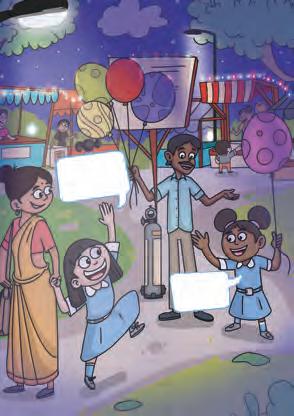
Part B is period 2. It has one fun activity and one presentation task.
Chapter number and name


Animation video
Text


Keywords






Work alone
Work in pairs
Work in groups



Teacher does the activity with learners


1 Meetings and Greetings Greeting others
2 Listen and Do Simple instructions
Magic Words Polite expressions
3
4 Making Requests Making requests
Greet others
Respond to greetings
Follow simple action commands Say simple action words to get something done
Use polite expressions in day-to-day interactions

Respond to polite expressions
Make simple requests
Respond to requests
5
About Myself Talking about oneself
My Family and Friends Talking about family and friends
Understand simple questions about family and friends
Understand simple questions about self Respond to basic questions about self 6
My Daily Routine
Sharing daily routine
Respond to basic questions about family and friends 7
Understand simple questions about daily routine
Let Me Tell You!
Share an experience in short
Understand simple questions about an experience
Respond to basic questions about daily routine 8
Let us Talk Participate in simple conversations
Answer simple questions about an experience 9
Understand simple questions during a conversation
Respond to simple questions in words/ phrases
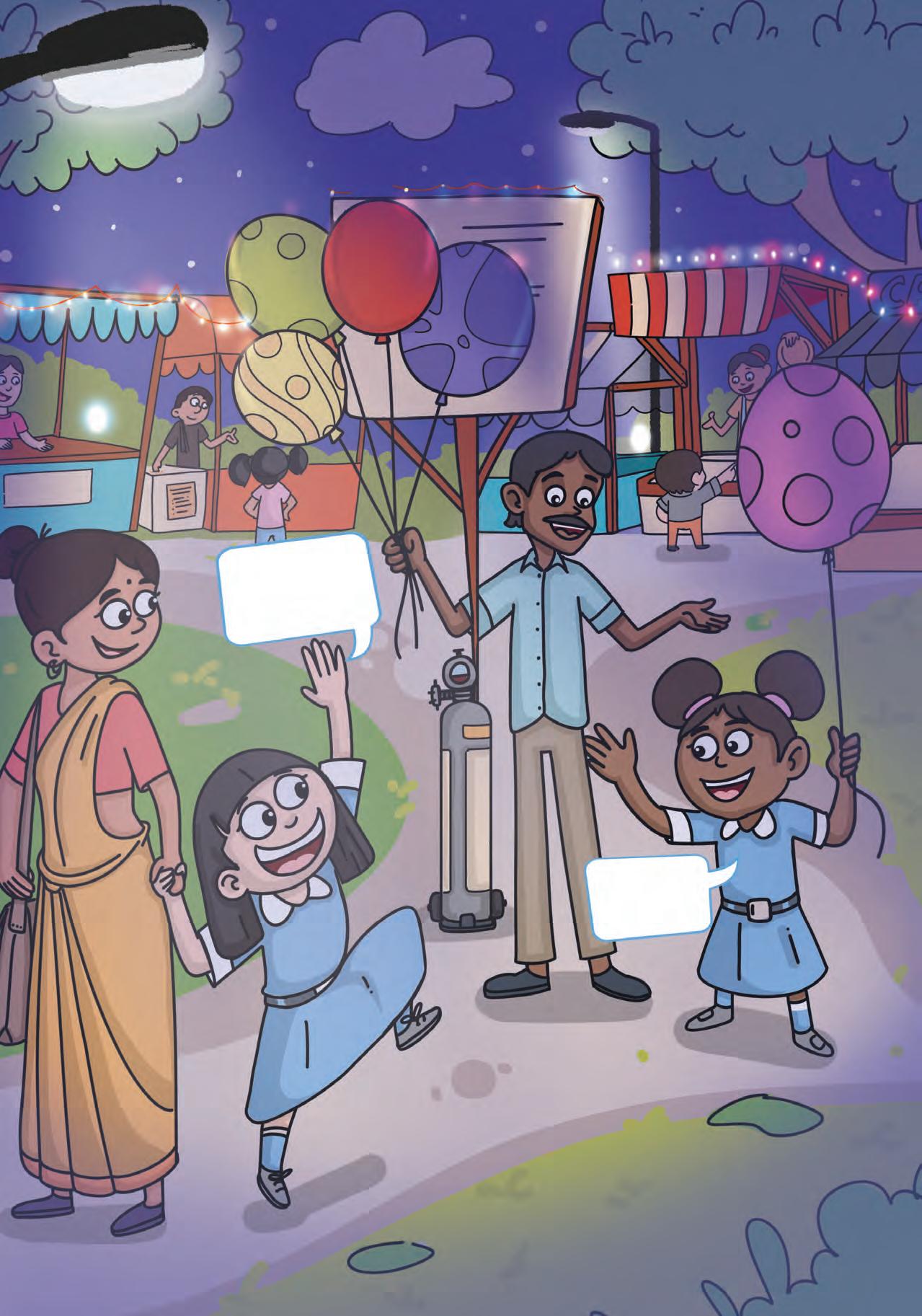

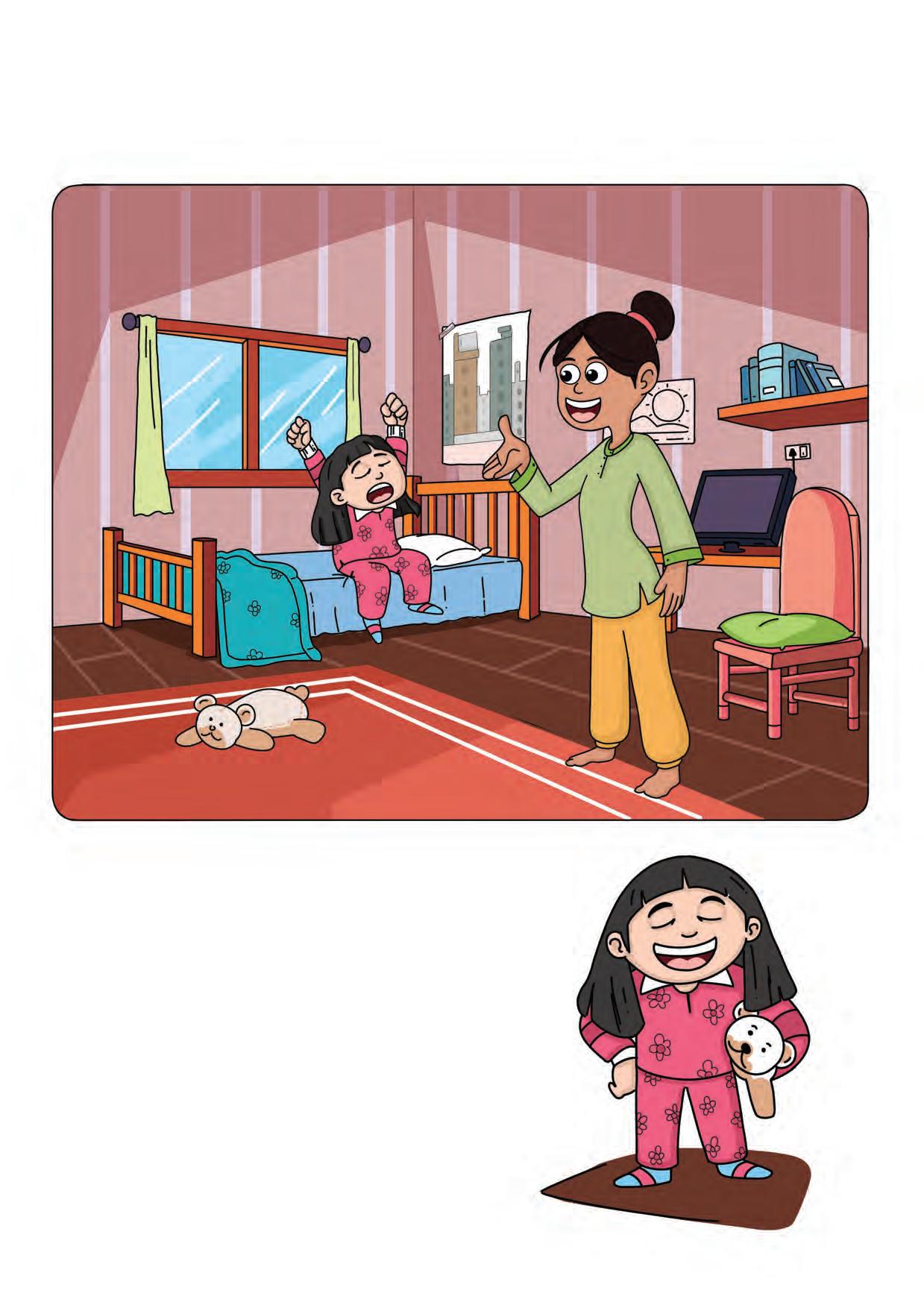

leave (leev): to go away from a place meet (meet): to come together face to face with someone wake up (vayk.up): to get up after sleep wave (vayv): to move the hand from side to side in the air to say hello or goodbye to someone


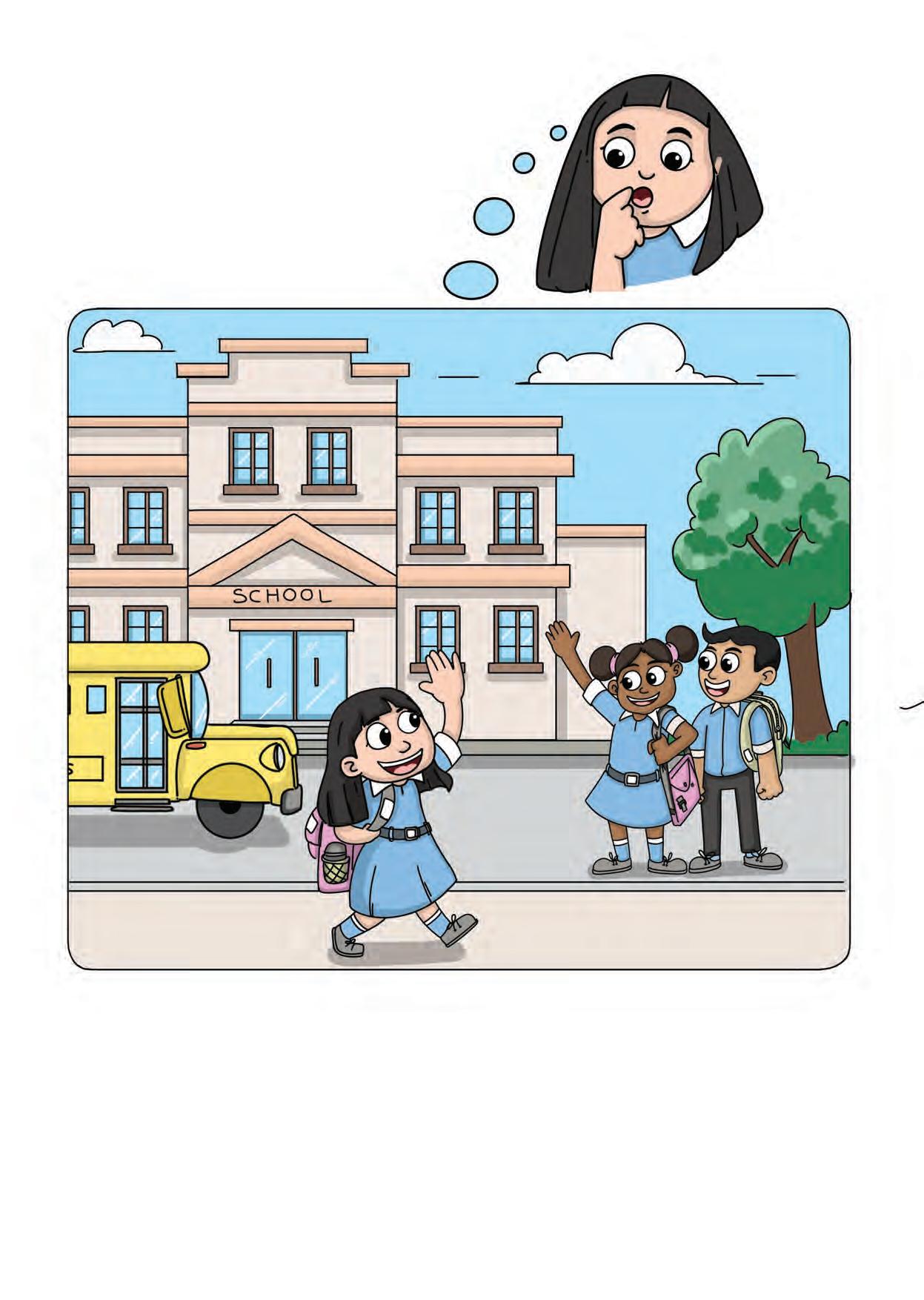

Boost your speaking!



The teacher will say some greetings. Reply politely.





Good morning!
Good morning!
How are you?


I am fine, thank you.
Nice to meet you.
Nice to meet you too!
Goodbye!
Goodbye! Take care.
Look at the teacher when you speak.
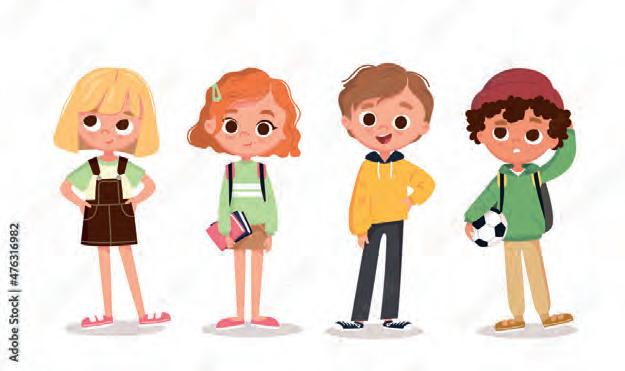
Smile and be polite.

Practise at home!
Listen to the Good Morning Song. Now, record it.




You meet your best friend after many days. What do you say?


Goodbye Bye. Take care.










Practise: At home, practise with an elder.
Present: Present your lines in the class.
Speak loudly. You can read from the book.

Rate each presentation! Write your friend’s name Write your friend’s name Write your friend’s name



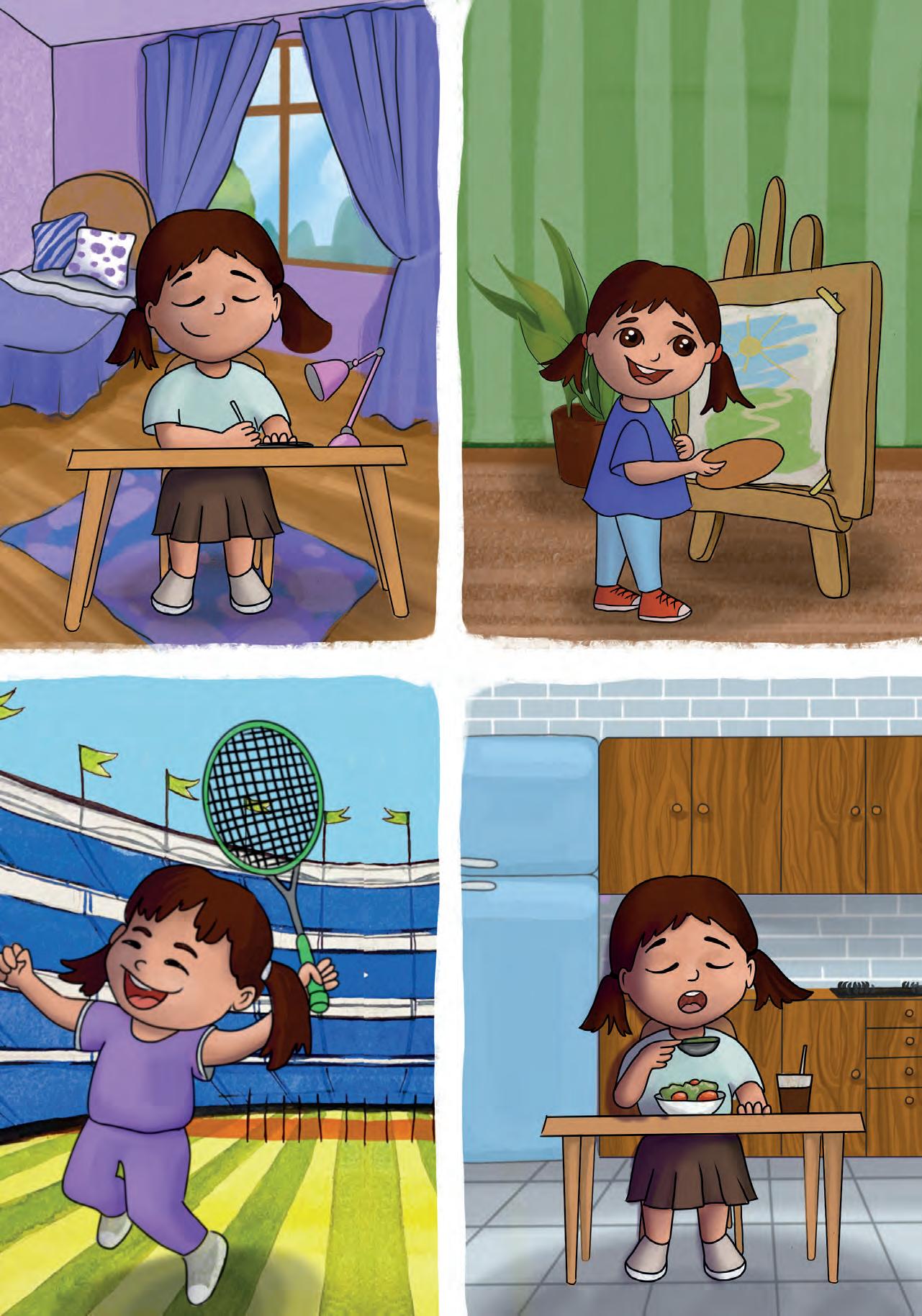


Boost your speaking!



Listen to the teacher. Do the action that the teacher says.
tap your feet clap your hands dance shake your head I say...

Now, say ONE action aloud. Others will do that action.
sit



laugh
read dance walk jump
Listen carefully. Do the actions correctly. Speak loudly.
Practise at home!
Project
How do we wash our hands? Listen and record it.
Tell any TWO things that we should do in the morning.
Project






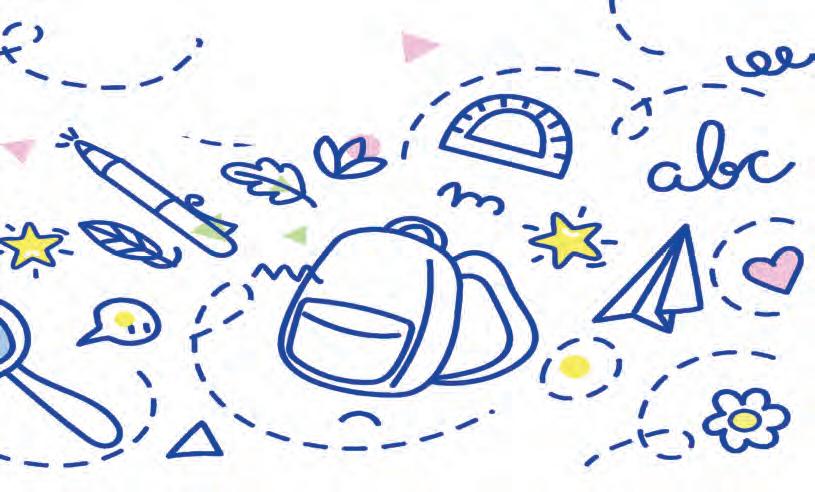


Are you okay?

Yes, thank you!
It is Sara’s first day at school. She sits with Ruchi.

“Please take out your drawing books and crayons,” says the teacher.
Sara says to Ruchi, “Excuse me! I do not have crayons. Can you please share with me?”

“Sure!” says Ruchi. “Thank you so much,” says Sara.
It is lunchtime now. Uh-oh! Ruchi did not bring her lunch.
Sara says to Ruchi, “You can share my food.”
Ruchi thanks Sara. Sara says, “You are welcome, Ruchi.”
This is how Sara makes a new friend.



Practise at home!

Listen to the story. Repeat it.
Sorry!


Your friend Jacob helped you in homework. What will you say to him?



You meet your friends. You say .
You break your friend’s toy. You say .
You get a gift. You say .
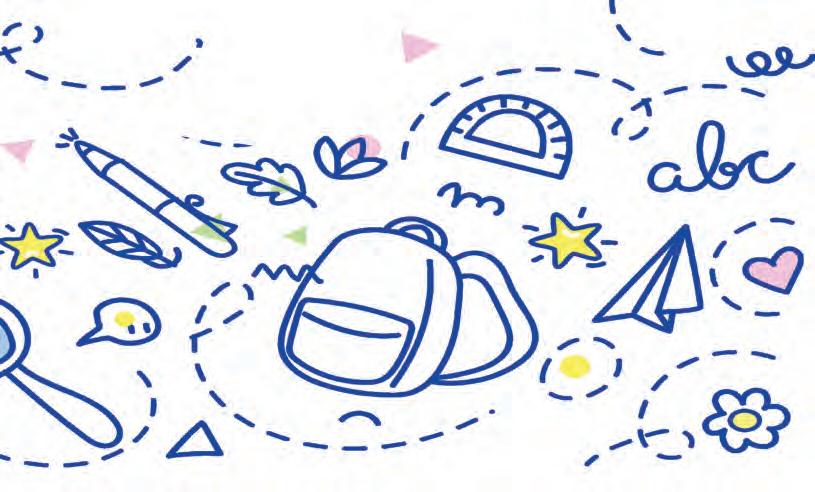
I say thanks to you. You say .

You go home from school. You say .

Speak with feeling.


Speak loudly.

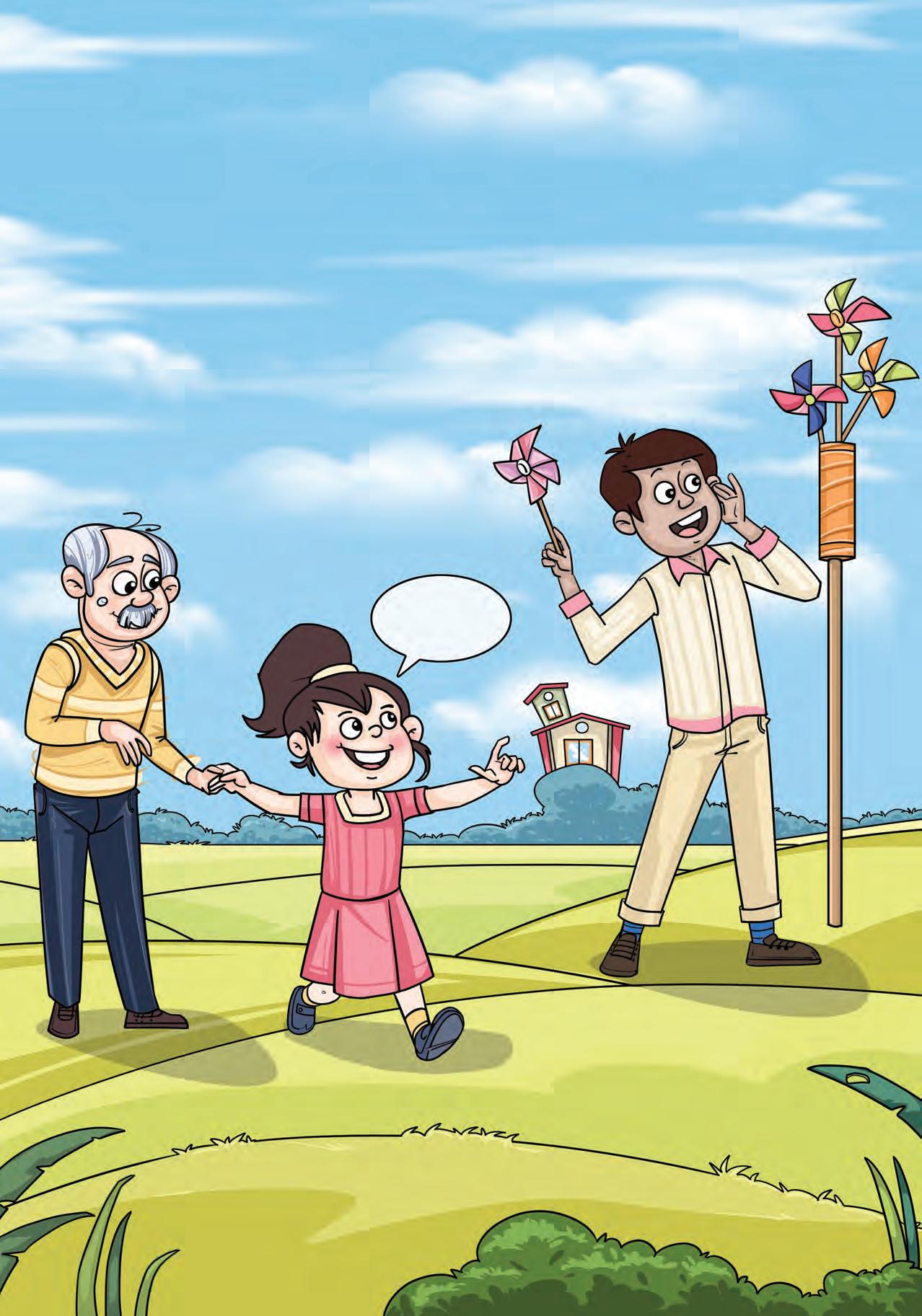

Sana is crying. She broke her favourite toy truck.
“You have three wishes,” she hears a voice. It is an angel!

Sana is so excited when she hears the angel’s voice. She says, “Can you please fix this truck?”
“Sure!” says the angel. “Here is your truck, as good as new.”
Sana picks up the truck and says, “Thank you!”
The angel asks, “What is your next wish?”
“My brother and I want a cute puppy. Please make this come true.”
“Yes, my child! Promise me you will take care of it,” says the angel.
“I will, I will!” says Sana. “For my last wish, I want my family to always be happy.”
The angel says, “Sana, you are very kind! All your wishes will come true now!”
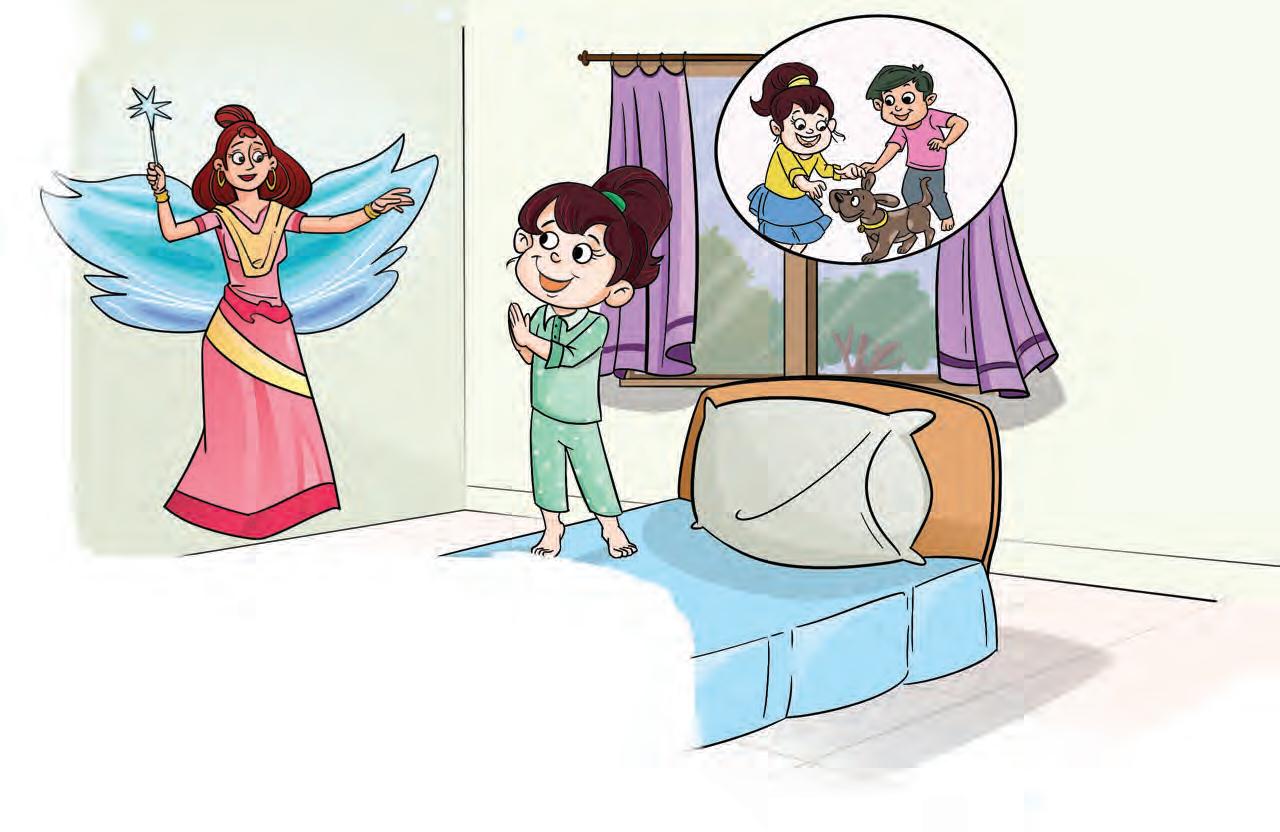
Then, the angel hugs Sana and waves her goodbye.
angel (ayn.juhl): a kind person with magical powers promise (pro·muhs): to say that you will do something for sure puppy (puh·pee): a baby dog true (troo): right or correct


Boost your speaking!



What do you wish for? Imagine you meet an angel. Make a wish.
Could you please… Please…

Could you please give me wings? Please give me a toy train.
Fold your hands when making the wish. Speak clearly. Speak loudly.

Practise at home!

Listen how to ask for help. Repeat the requests.


What do you want to buy? Request your parents to buy it for you.






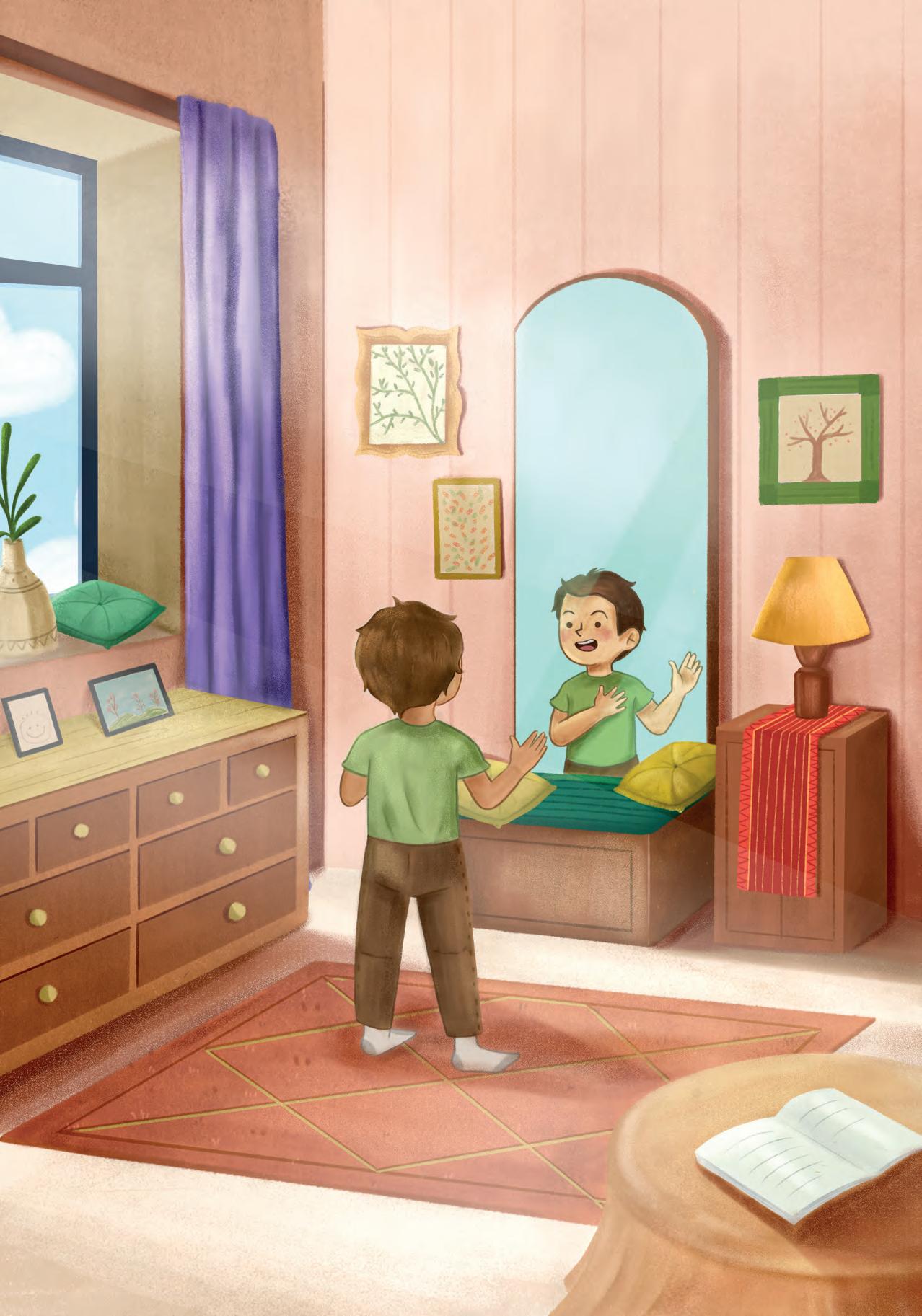



Vihaan: I am in class 1C. My class teacher is Tanya ma’am.
Adarsh uncle: Wonderful! Which school do you go to?

Vihaan: I go to Peach Kids’ School. I love my school.

Adarsh uncle: I am so happy to hear that. Where is your papa?

Vihaan: He is in the kitchen. Come, let’s go.
lovely (luhv·lee): beautiful wonderful (vuhn·duh·fl): very good
Boost your speaking!

Tell your teacher about Vihaan.

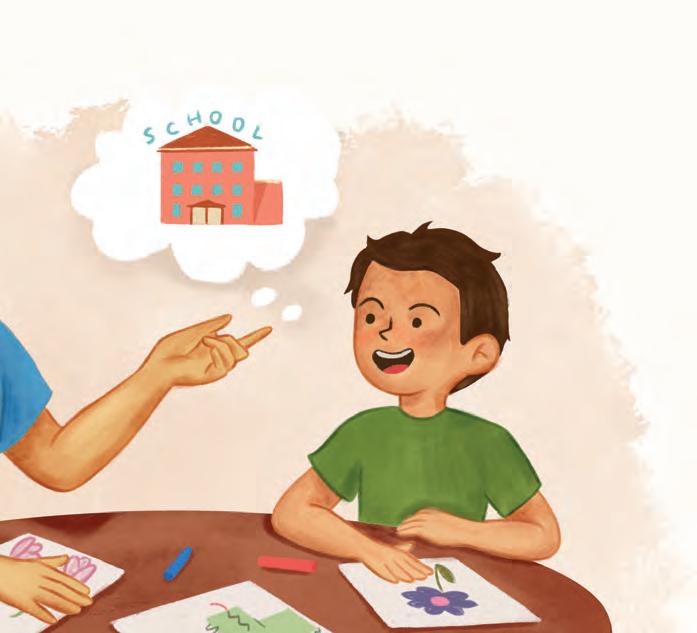
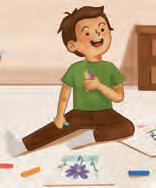
Vihaan loves drawing.

Practise at home!
This is Ginni. Listen to her story. Then, record it.


Tell us TWO things about yourself.






Practise:

At home, read from the notes.
Tell your parents about yourself. Speak loudly.
Present: Come and tell your friends about yourself.
Speak loudly.
Look at your friends when you speak.


You can read from the book, if you want to.


Rate each presentation!
Write your friend’s name
Write your friend’s name
Write your friend’s name
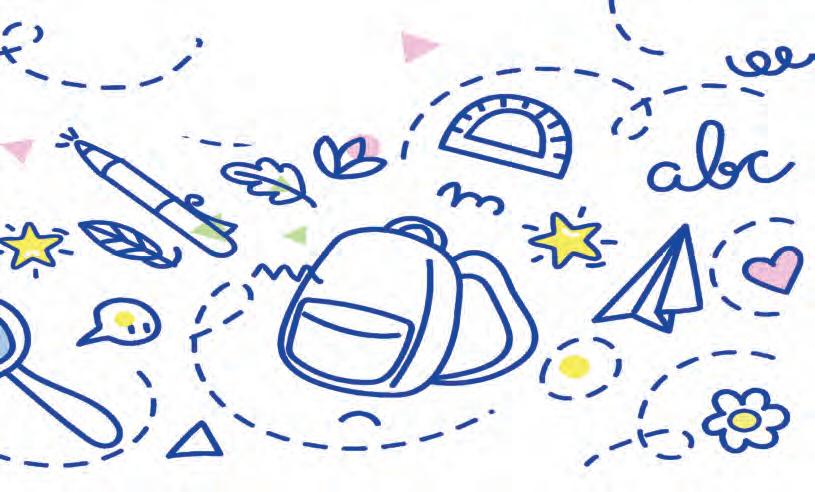


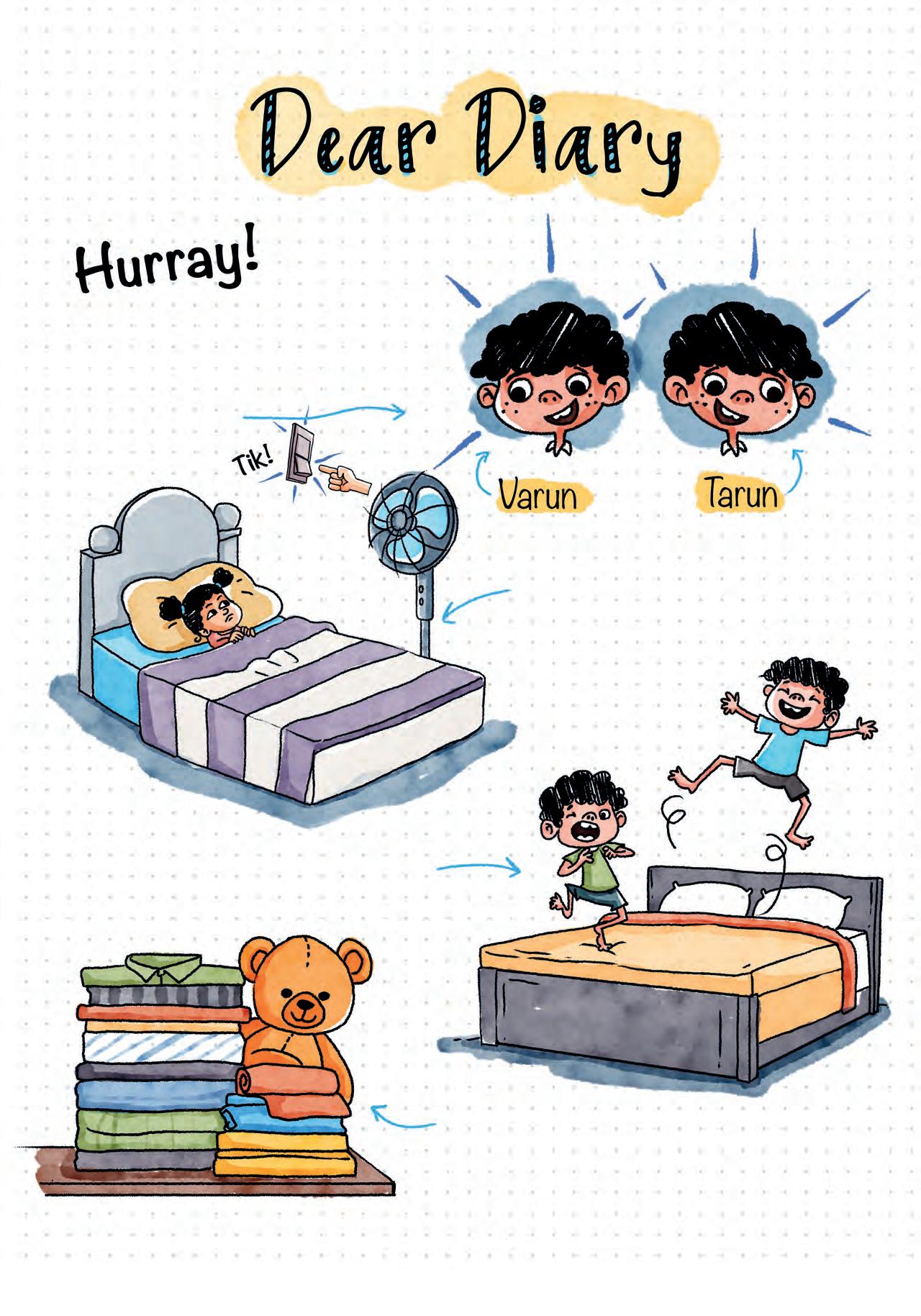

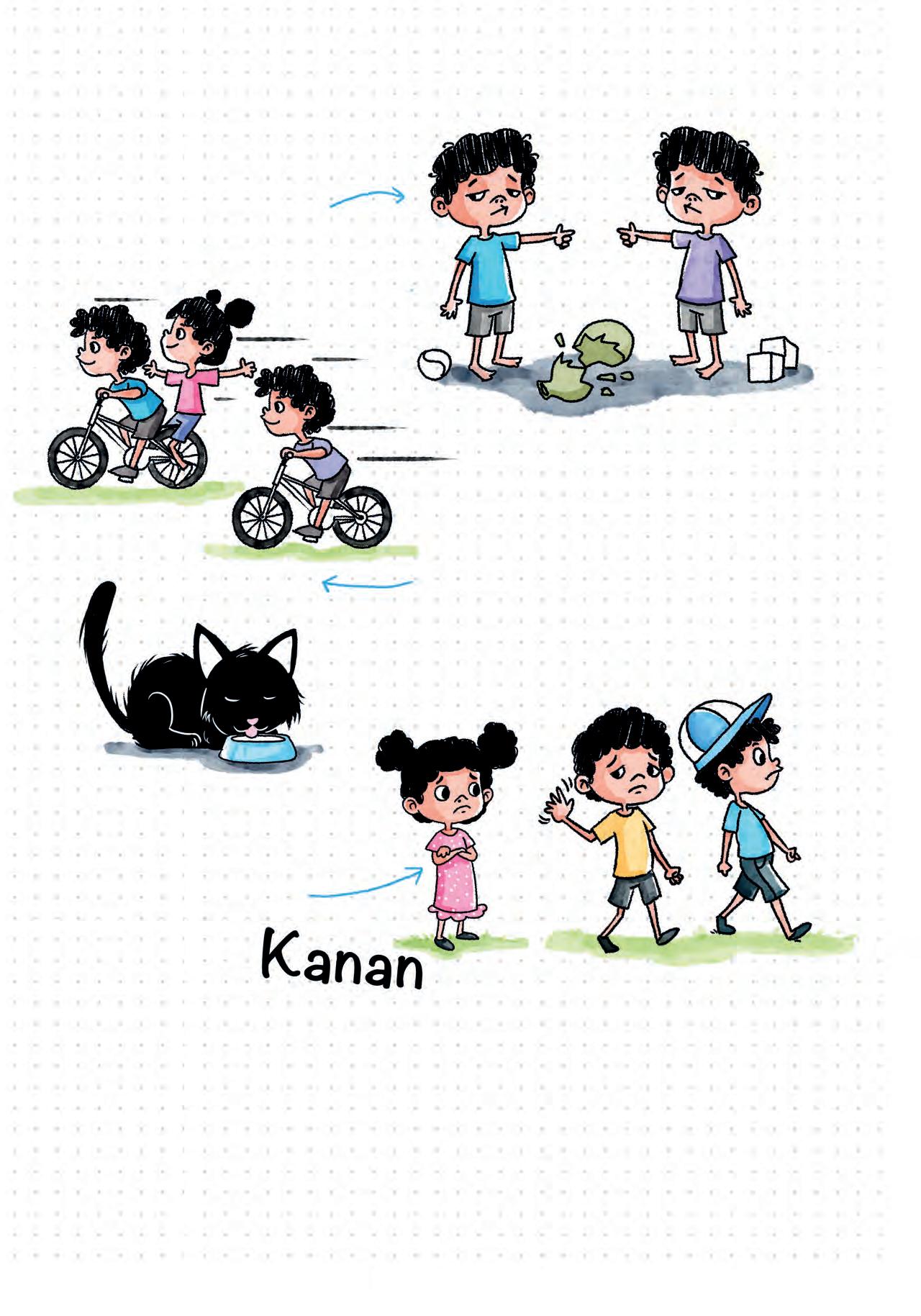

Boost your speaking!



Tell about yourself.

How many people are there in your family? There are… people in my family.
What is your father’s name?
My father’s name is...





What is your mother’s name?
My mother’s name is…

What is your best friend’s name?

My best friend’s name is…
You can answer in words also.

Listen to the Family Song. Record it.


Tell us any ONE thing about your best friend.


Match the pictures with the names of family members. father



The final show!
Write about your family. Then, tell your friends about them.
Write: Fill in the blanks about your family. 1 Hello!



My name is .
I have a family.
There are people in my family.
I love my family.

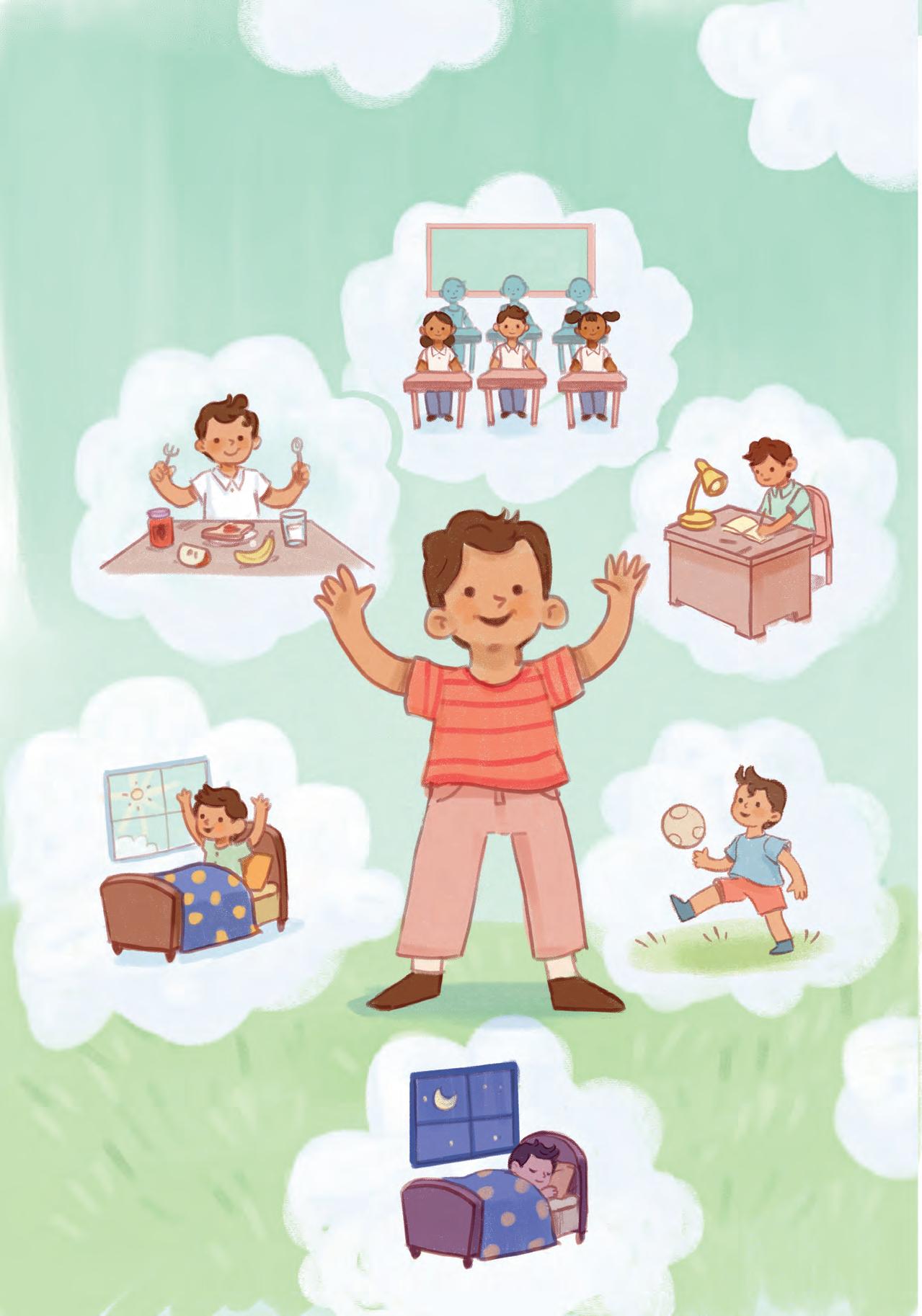




Boost your speaking!


1. Say what you do in the morning.
brush my teeth do homework

go to school
2. Say what you do at night.
take a bath
drink water
watch TV
eat breakfast
sleep
eat dinner
Practise at home!







Project



Evening Time
Tell us ONE thing you do in the evening. 14 53 Chapter 7 • My Daily Routine















Practise: Read the sentences aloud. Practise many times at home.


Present: Tell your friends what you do at home.
Speak loudly.
Smile when you speak. You can read from the book.


Rate each presentation!
Write your friend’s name
Write your friend’s name
Write your friend’s name





Good morning, everyone.
Let me tell you about my day at the zoo.
It was a sunny morning. I was so excited. Mumma, Papa, and I were going to the zoo.
I wore my favourite black dress and red shoes. I also took my sunglasses.
We first saw two giraffes. I looked at their long necks. I wondered how many necklaces they can wear!
Then, we saw the angry lion. I thought, what joke can make him laugh?

We saw many more animals. But the funniest was the gorilla. She made silly faces at me. She also tried to take my sunglasses. I loved my zoo visit. Now I want to hear about yours.
-Juhinecklaces (nek.lesses): pieces of jewellery worn around the neck
silly (si.lee): funny

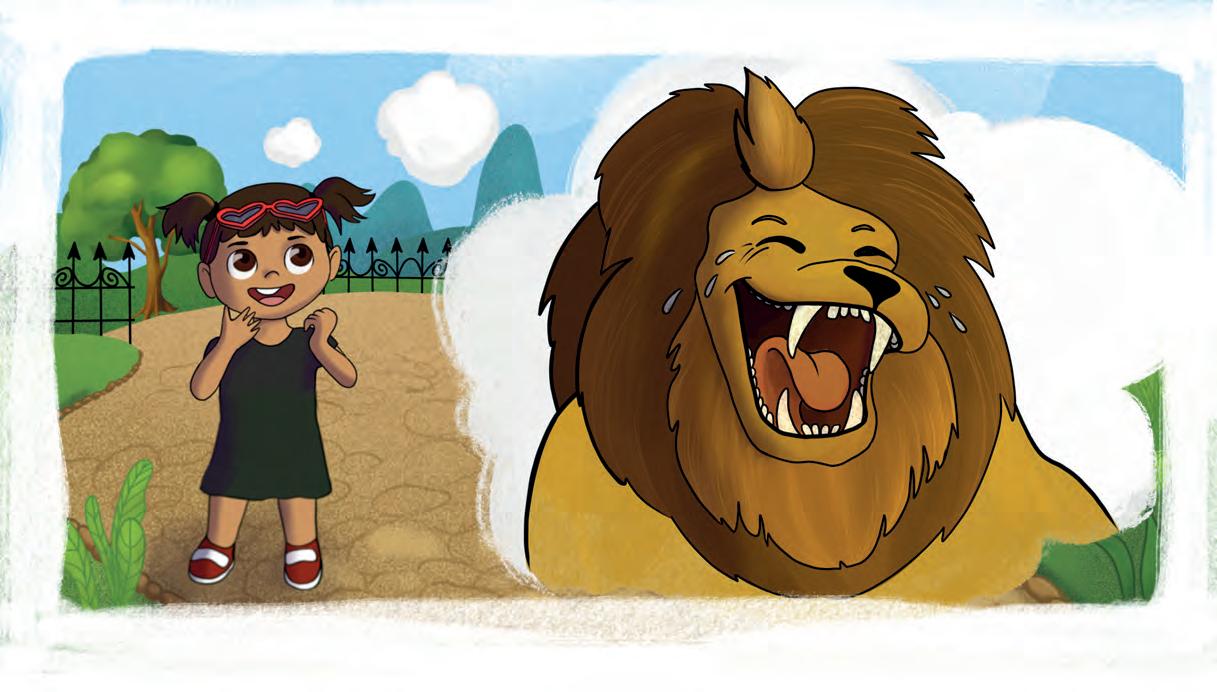

sunny (suhn.ee): bright, full of sunlight
wondered (vuhn.duhd): thought

Boost your speaking!



Answer the questions about Juhi’s day at the zoo.

Who took Juhi to the zoo?
Juhi’s father Juhi’s mother
What was the day like?


bright sunny
What did Juhi wear?

black dress red shoes sunglasses
Which animals did Juhi see?
giraffe lion gorilla


Who tried to take Juhi’s sunglasses?
gorilla


Practise at home!
Project
About Your Day


Project
16





The final show!
Write about what you did yesterday. Practise in front of your family. Then, present it in class.


Write: Read the questions. Think and write about what you did yesterday. Take help from elders. 1






I ate .
What did you eat?
I played .
What did you play?
I watched .
What did you watch on TV?
Practise:

Practise saying in front of an elder.
Practise many times.
Present: Present the lines in the class.
Smile as you speak. Speak loudly and clearly.
You can read from the book.

Rate each presentation! Write your friend’s name Write your friend’s name Write your friend’s name



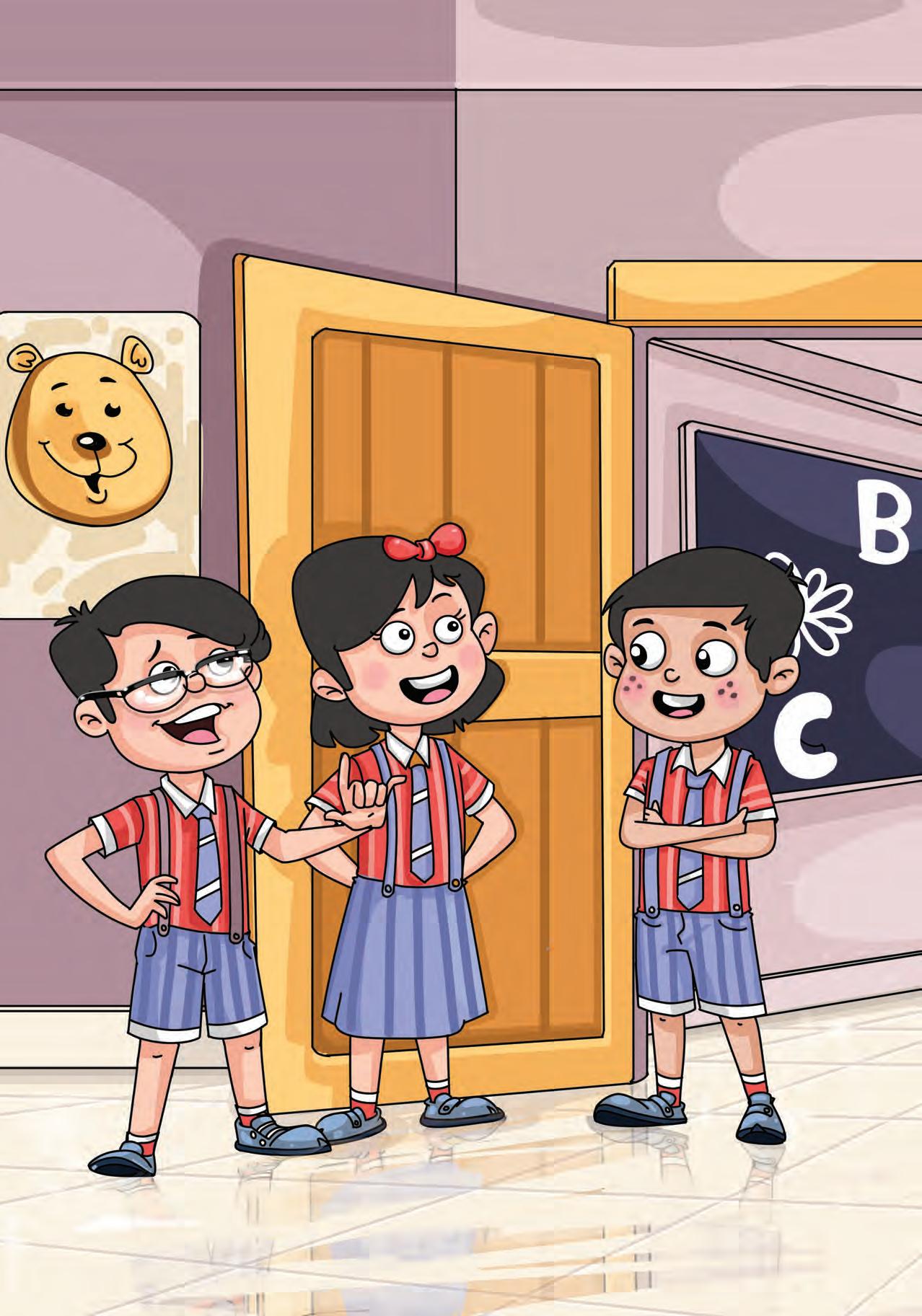




Boost your speaking!




Look at the picture. Answer your teacher’s questions about it.



Examples:
What colour is the sun? The sun is yellow.

How many giraffes are there?
There are two giraffes.
Where is the monkey? The monkey is on the tree.
Practise at home!
Sanju is talking to his grandmother on the phone. Listen and record it.



Your friend did not come to school for many days. What will you say when you meet?







The 'Conversations' book follows a unique spiralling approach that systematically builds language skills and enables children to express themselves verbally in real-world situations, thus preparing them for the needs of the 21st century world. Each chapter focuses on building specific and age-appropriate English language competencies by weaving together activities that are contextual, experiential, joyful, and research-based.
• Activity-based Learning: The book offers joyful and experiential activities that build English communication competencies.
• Texts as per NEP 2020 themes: The book has exciting and stimulating texts that pave the way for English communication activities.
• Tech Integration: The book works in sync with the digital world, where various other activities and projects are undertaken. Learner outputs are evaluated through an AI-based speech recognition engine.
• Assessment of Speaking & Listening as per CEFR: The program includes special assessment that allows systematic reporting on growth of English language skills as per the CEFR.

• Teachers’ Manual: The book is complemented by the Teachers’ Manual that enables teachers to conduct each session effectively.
Uolo partners with K-12 schools to provide technology-based learning programs. We believe pedagogy and technology must come together to deliver scalable learning experiences that generate measurable outcomes. Uolo is trusted by over 8,000 schools with more than 3 million learners across India, South East Asia, and the Middle East.